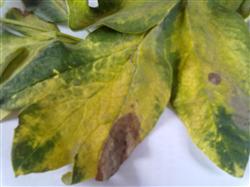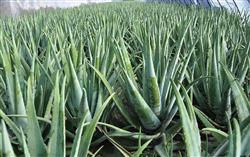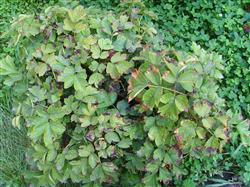How to raise peonies: what is peony seedling blight?

What is peony seedling blight? What harm does peony seedling blight have? Is there any way to prevent it? Please also give an introduction Peony seedling blight damage: this disease is distributed in the south and north, occurred in the seedling stage. The host range of this fungus is wide, and it can harm the seedlings of more than 100 kinds of plants. It is also very susceptible to the seedlings of Michelia, Dahlia, Asterina, Chrysanthemum, Chlorophytum, Pine Leaf Peony, etc., which are cut by tender stems, causing standing or root rot. Symptom disease seedlings from the upper soil surface invasion of seedlings stem base, disease, first into brown, then into dark brown, seriously damaged, phloem is destroyed, roots into black brown rot. At this time, the leaves of the diseased plant are yellow, the plant wilts and dies, but it does not fall. This fungus can also infect the wet leaves near the ground of young plants, causing leaf blight, irregular, water-stained, yellow-brown to black-brown spots on the edges, quickly spreading to the whole leaves and petioles, causing dead rot, sometimes brown mycelium and attached small sclerotia can be seen in the diseased parts. Rhizoctonia solani belongs to subphylum semipterida, hyphomycetes, asporales. Hyphae were spiderweb-like, around the parasitic tissue, with septa, 8-12 microns thick, colorless and oily in the early stage, acute angle branches, branchlets and main branches slightly contracted, often with septa, aging hyphae for yellow brown, and was right-angled branches, small villages and main branches connected to the site is not constricted. Rhizoctonia solani in the soil temperature between 13-26 degrees Celsius can be disease, with 20-24 degrees Celsius for the appropriate. It can adapt to a wide range of soil pH values, and can cause disease between pH 2.6 and 6.9. Pathway of infection: fungus overwinters or survives for a long time on residual diseased plants or soil by mycelium or sclerotia. The main infection source was soil with bacteria, but the disease could be transmitted by residues of diseased plants and fertilizer, and also by running water, farm implements, human and livestock. Wet weather is suitable for the occurrence of diseases, whereas dry weather is not suitable for the development of diseases. The disease is often serious in continuous cropping land for many years. Peony seedling blight control methods: 1, strict control of seedbed and cuttage bed irrigation water, pay attention to timely drainage; pay attention to ventilation; sunny shade, in case the soil temperature is too high, burns seedlings, causing wounds, so that germs are easy to infect. 2. Pay attention to the cleanliness of the garden, deal with the residue of diseased plants in time, and do not use decomposed fertilizer with germs. 3. The diseased plants were found to be uprooted and burned in time. 4. For contaminated seedbeds, such as other soils that continue to be used for cuttage, or for cuttage, formalin can be used for soil disinfection before cuttage, 50 ml of formalin per square meter, 8-12 kg of water can be added to the soil, and more than 1 week after irrigation can be used for sowing seedlings; Or mix 70% quintozene powder with 65% zinc wettable powder in equal amount, treat soil, sprinkle with mixed powder 8- 10g per square meter, and mix well with soil. 5. Spraying 75% chlorothalonil wettable powder 800-1000 times, or 50% thiram wettable powder 500 times, or 75% chloronitrobenzene 600 times, or 65% dizeb wettable powder 600 times, or 64% dizeb mixed at 1:2 600 times, or 72.2% Prochloraz water agent 400 times, or 15% hymexiline (Tujunxiao) water agent 450 times, 3 liters of liquid per square meter. Click for more peony planting techniques Click for more flower planting techniques
- Prev

Aloe breeding: how to control diseases and insect pests of edible aloe?
How to control diseases and insect pests of edible aloe? Please introduce the method of edible aloe vera in the prevention and control of diseases and insect pests should adopt scientific control measures, should vigorously promote pollution-free control technology, prohibit high-toxic and high-residue pesticides, not only effectively control the harm of diseases and insect pests, but also make the pesticide residues of the products do not exceed the standard. Take measures on prevention and control.
- Next

How to raise peonies: what is peony gray mold?
What is Botrytis cinerea of peony? What harm does Botrytis cinerea do to peony? Also ask friends to help introduce the harm of Botrytis cinerea: peony is damaged by Botrytis cinerea during the whole growth period, and the disease is the most common from June to July every year. The stem base of the seedlings was killed, showing dark green, water stains, irregular disease spots, and gradually brown.
Related
- Fuxing push coffee new agricultural production and marketing class: lack of small-scale processing plants
- Jujube rice field leisure farm deep ploughing Yilan for five years to create a space for organic food and play
- Nongyu Farm-A trial of organic papaya for brave women with advanced technology
- Four points for attention in the prevention and control of diseases and insect pests of edible fungi
- How to add nutrient solution to Edible Fungi
- Is there any good way to control edible fungus mites?
- Open Inoculation Technology of Edible Fungi
- Is there any clever way to use fertilizer for edible fungus in winter?
- What agents are used to kill the pathogens of edible fungi in the mushroom shed?
- Rapid drying of Edible Fungi

